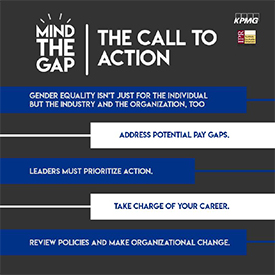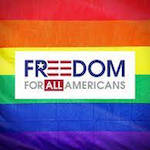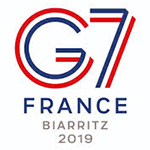While women now account for more than three out of four workers in the PR industry, only about 20 percent of the top leadership positions are occupied by women, according to a new report from the Institute for Public Relations and KPMG.
“Minding the Gap: Women’s Leadership in Public Relations” looks at some of the reasons why the male-female leadership gap persists in the PR industry, and suggests a few strategies for overcoming it.
The study polled both male and female employees in mid-level and senior-level positions to find out how gender affects access to the C-suite as well as the ways in which it impacts the overall work experience.
One of the main takeaways is that whether or not you even see the gap is often a matter of which side of it you’re standing on. Almost none of the male study respondents said that they’d ever experienced discrimination in the workplace. Not surprisingly, almost all female respondents said that they had.
 |
That split extends to the differing perceptions as regards how men and women view the systemic barriers women face as they move up through the ranks. Many of the men surveyed said that they did not think there were any such systemic barriers. Women cited several, including work-life fit, sexism and unconscious bias.
In addition, many women said that they felt left out of the “boys club” that they saw as a key to moving up the corporate ladder. Several female respondents mentioned being left out of client pitches and social outings.
“I know I grew one of the biggest accounts we had and then all of a sudden, everyone started taking notice and my boss then wanted to go out to golf with my client and I was not invited to that even though I was the lead person,” one mid-level female executive said.
The problems women face as regards balancing work and family were also mentioned. “I actually had to make a choice to keep working or have children,” another female respondent said.
When it comes to how the industry should work to address the imbalance, several key factors came up. First off, respondents stressed that gender equality needs to be seen as an issue that affects all employees—not just women.
Addressing gender pay disparity was also seen as very important. Some respondents noted that consistently reviewing organization-wide compensation would go a long way toward addressing that problem.
But perhaps most important is the power of good leadership. Respondents said that having mentors and sponsors can make the path to the C-suite far more manageable for female workers. Interestingly, many said that informal mentorships, rather than formal mentorship programs, often had the greatest effect.
“Minding the Gap” was the result of ten focus groups, including sixty executives overall. Focus groups were comprised of mid-level women, mid-level men, senior-level women or senior-level men. Each group had a moderator of the same sex. To see the complete study, go to https://instituteforpr.org/mind-the-gap-womens-leadership-in-public-relations/.


 Ballard Partners picked up DC-based Freedom for All Americans organization, which advocates for full non-discrimination protection for LGBTQ people.
Ballard Partners picked up DC-based Freedom for All Americans organization, which advocates for full non-discrimination protection for LGBTQ people. Edelman has signed on as the sole communications shop to the G7 Business for Inclusive Growth Coalition, which is committed to investing $1B to advance the human rights of more than 100M people, so far.
Edelman has signed on as the sole communications shop to the G7 Business for Inclusive Growth Coalition, which is committed to investing $1B to advance the human rights of more than 100M people, so far. Professional women are far more enthusiastic than men about policies needed to improve gender equality in the workplace, according to survey from FTI Consulting and Mine the Gap. (1 reader comment)
Professional women are far more enthusiastic than men about policies needed to improve gender equality in the workplace, according to survey from FTI Consulting and Mine the Gap. (1 reader comment)


 Have a comment? Send it to
Have a comment? Send it to 
No comments have been submitted for this story yet.